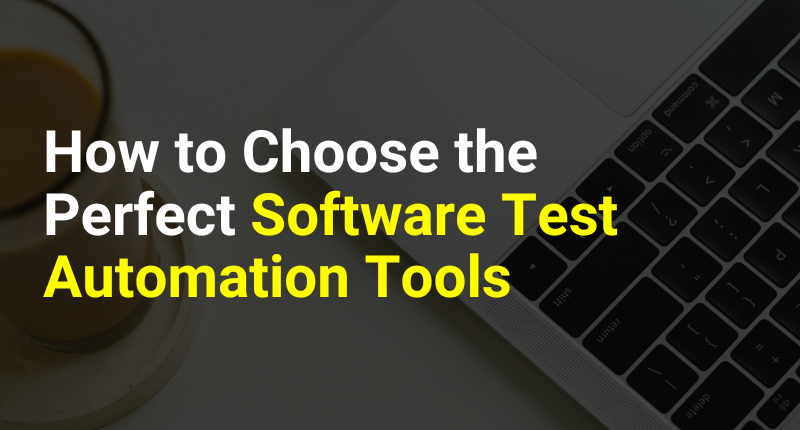In today’s fast-paced world of software development, test automation has become an indispensable part of the quality assurance process. Automation helps software development teams save time, reduce human errors, and ensure a higher level of test coverage. However, selecting the right test automation tools is crucial for success. With a plethora of options available in the market, making the perfect choice can be challenging. In this blog, we will guide you through the process of selecting the ideal software test automation tools for your project.
1. Assess Your Testing Needs
Before you can choose the perfect test automation tools, you need to understand your specific testing requirements. Consider the following factors:
- Type of Application: Determine the type of application you are testing. Is it a web application, mobile app, desktop software, or a combination of these? Some automation tools specialize in one area, while others cater to multiple platforms.
- Testing Objectives: Define your testing goals and objectives. Are you looking for functional testing, regression testing, performance testing, security testing, or a combination of these? Different tools may excel in different types of testing.
- Skill Set of the Team: Consider the skills and expertise of your testing team. Some tools require programming knowledge, while others offer a more user-friendly, codeless interface.
- Budget: Determine your budget for test automation. Some tools are open source or have a free version, while others come with licensing costs.
2. Research Available Tools
Once you have a clear understanding of your testing needs, it’s time to research the available test automation tools. There are various categories of tools, including:
- Open Source Tools: These tools are free to use and often have strong community support. Examples include Selenium, Appium, and JUnit.
- Commercial Tools: These tools come with a cost but often provide additional features, support, and better integration. Examples include TestComplete, Ranorex, and Silk Test.
- Cross-Platform Tools: Some tools are designed to work across various platforms, such as mobile, web, and desktop. Examples include Appium and TestProject.
- Codeless Tools: These tools are user-friendly and do not require extensive programming skills. Examples include Katalon Studio and Testim.
- Performance Testing Tools: If you need to focus on performance testing, tools like JMeter, LoadRunner, and Gatling may be more suitable.
3. Evaluate Key Features
To choose the perfect software test automation tools, you should evaluate key features that match your requirements:
- Scripting Language: Determine if the tool supports your preferred programming language, as this will make it easier for your team to write and maintain test scripts.
- Test Environment Compatibility: Ensure that the tool supports the technology stack, browsers, devices, and operating systems relevant to your application.
- Reporting and Analytics: Look for tools that provide comprehensive reporting and analytics features, as they are essential for tracking test results and identifying issues.
- Integration Capabilities: Check if the tool can integrate seamlessly with your existing development and CI/CD tools, like Jenkins, JIRA, or Git.
- Scalability: Consider whether the tool can scale as your project grows, supporting multiple test cases and concurrent executions.
- Support and Documentation: Assess the availability of customer support and the quality of documentation. Good support is crucial for resolving issues quickly.
4. Try Before You Buy
Before making a final decision, it’s wise to conduct a proof of concept or a trial run. Most reputable test automation tools offer free trials or community editions. This will allow your team to get hands-on experience with the tool and assess its suitability for your project.
5. Seek Feedback and Reviews
It’s beneficial to gather feedback from peers, industry experts, and online reviews. Other professionals who have experience with the tool can provide valuable insights into its pros and cons.
6. Consider Long-Term Viability
Think about the long-term viability of the tool. Check if it is actively maintained and updated. Abandoned tools can become a burden as they may not keep up with the latest technologies.
7. Make a Well-Informed Decision
After thorough research and evaluation, make an informed decision. The perfect software test automation tool should align with your project’s goals, team skills, and budget. Remember that there is no one-size-fits-all solution, and the right choice depends on your specific circumstances.
Conclusion
Selecting the perfect software test automation tools is a critical step towards ensuring the quality of your software products. By carefully assessing your needs, researching available options, and evaluating key features, you can make an informed decision that best suits your project. Keep in mind that the software testing landscape is constantly evolving, so it’s essential to stay up to date with emerging tools and technologies to maintain the efficiency of your test automation efforts.




